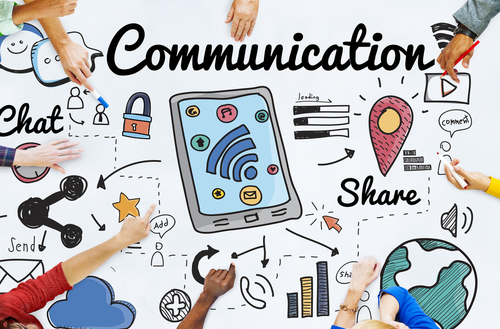Why is visibility for your initiative so important?
You need to tell the world your story
So, you have set up your foundation/association and are doing different activities to support your community, but you want more people to know and support what you are doing. How can you tell your story to others to get them to support or join your cause?
This is where visibility and communication become important the more people who know about the good work you do, the more support you will receive and the larger impact you can make, and the more people who can join your cause. In the case of an Alumni Association – visibility becomes important to grow your membership base.
Here are some ideas around how you can begin to tell your story:

1. Develop a communication plan/strategy
A communications plan is a document that guides the external communications efforts of an organization. It will help you to strategically focus your communication and outreach efforts around a certain set of goals – usually the mission and objectives of an organization. It can help you promote your work in the public space.
Some of the Key Elements of a Communications Plan are:
a. Understand and be clear about what type of message/information you want to communicate as an association/foundation and why you are doing so.
b. Knowing who your target audience groups will be
- Are you sharing information/telling your story to government, funders, community members, etc.
- Also consider the age of your audience, language they speak, education levels, access to technology, where they stay, etc.
- The above elements have an impact on the mediums of communication you will use and your style of communication – for example if your target audience group is
Tip: One way to know and manage your audience group is to create a database where you can list the names and details of the individuals/organisations/institutions you want to target.
Your database at the minimum should include the following details:
- Name of individual/organisation
- Contact details
- Telephone Number (mobile and landline (if applicable))
- Email address
Physical Address
Your message is a call to action. Now that you have identified each of your audience groups, what do you want them to do?
Messages are most effective when they include no more than three main points. Here are three components that should guide the creation of your message:
- Needs statement: What need is your foundation/association addressing and why is it important?
- Program strategy: How is your foundation/association addressing that need?
- Call to action: Now that you’ve identified the need and how your organization is the solution, ask your audience to do something. Do you want them to donate funds? Sign up for your program? Come to an event? Be clear on your call to action and state it explicitly in your message.
Note: Depending on your audience groups – your message could differ from one group to another, but it can keep the same three components.
d. Identify and Create Your Communication Materials
Looking at your audience create a list of every tool and platform you think you may need.
- What are communication tools? These are items such as newsletters, brochures, annual reports, flyers, press releases, and other documents you may need to communicate.
- What are communication platforms? These are the platforms you are using to share your communication materials. The mediums could be technology or non-technology platforms. Examples of technology platforms are social media, email; non-technology platforms would involve newspapers, notice boards.
2. Tools to increase your visibility
a. Websites
One of the ways to share the work that you are doing is through developing a website.
If you are interested in having a website; SIVIO Institute through the Philanthropy can host develop and host a website for you. For more details
Social Media PlatformsIf you are not ready to consider a website, but still want to make use of a digital platform possibly consider having a social media platform to share information and tell your story. Platforms that you can consider include:
c. Newsletters
Newsletters are about keeping your stakeholders up to date with the latest developments in your association/foundation/organisation. They are sent on a predictable schedule to inform readers of what you have been doing, what you plan to do and also serve as a platform to help fundraise for the activities you want to undertake.
You can download sample newsletters from our resources section